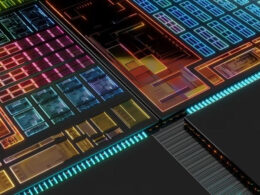In 1999, AMD’s Athlon K7 processors emerged as strong competitors against Intel’s chips, particularly outpacing the Pentium III. Now, a quarter of a century later, researchers have discovered a hidden carving on the AMD Athlon K7’s Pluto cores — a revolver firing a bullet and the silhouette of Texas. This unique find was made by Fritzchens Fritz, a macro-photography and processor crystal enthusiast.
The images likely reference AMD’s Austin, Texas facilities or perhaps signify a forthcoming “duel” with Intel. Evidently, one of the chip’s creators was a fan of Western romance and Wild West allure. It is entirely possible that the mystery artist was Jim Keller, a well-known leading chip architect of the last decades and the developer of AMD’s current Zen architecture, who had a hand in creating the K7.
The Athlon K7 was the game-changer that first elevated AMD to on par with Intel in performance. AMD’s Pluto core processors boasted clock speeds ranging from 550 to 850 MHz and exhibited superior benchmark test results, including floating-point calculations previously dominated by Intel’s best processors.
Furthermore, the AMD Athlon K7 outperformed Pentium III in Quake III by delivering just under 120 frames per second, while Pentium III struggled to reach 100. This performance massively impacted the consumer processor market, prompting many gamers and computer enthusiasts to reconsider AMD’s product offerings.
AMD Athlon K7 Pluto Top Metal Layer A revolver and Texas Map can be found in one of the four corners! And some explanations about the stone relief. The relief contains the AMD Athlon K7 Series from: Argon -> Pluto -> Thunderbird -> Palomino -> Thoroughbred -> Barton 1/4? pic.twitter.com/1rtmHidJkf
— Fritzchens Fritz (@FritzchensFritz) February 5, 2024
Reflecting on the semiconductor industry’s dramatic advance since 1999, the first Athlon K7s were created using a 0.25-micron process (250 nm) and contained 22 million transistors. These days, AMD manufactures processors using TSMC’s 5-nm and 4-nm processes, and its Phoenix APU holds 25 billion transistors.
AMD’s market capitalization eclipsed Intel’s in June 2022. Today, AMD is valued around $270 billion, while Intel’s valuation sits at about $180 billion. This is a remarkable shift from 1999, considering Intel’s market cap has stayed relatively steady since then, while AMD was worth just a couple of billion.





